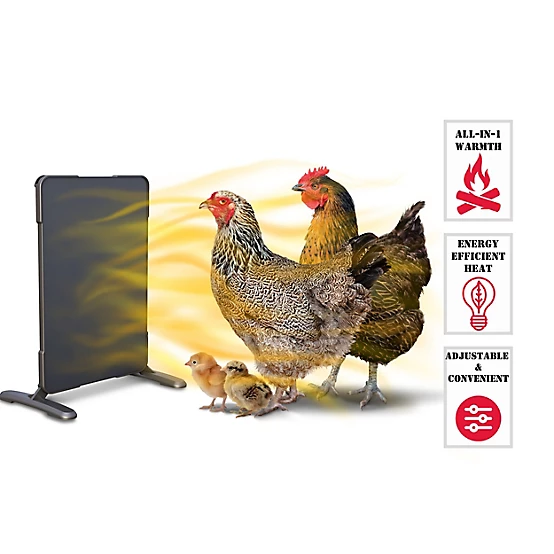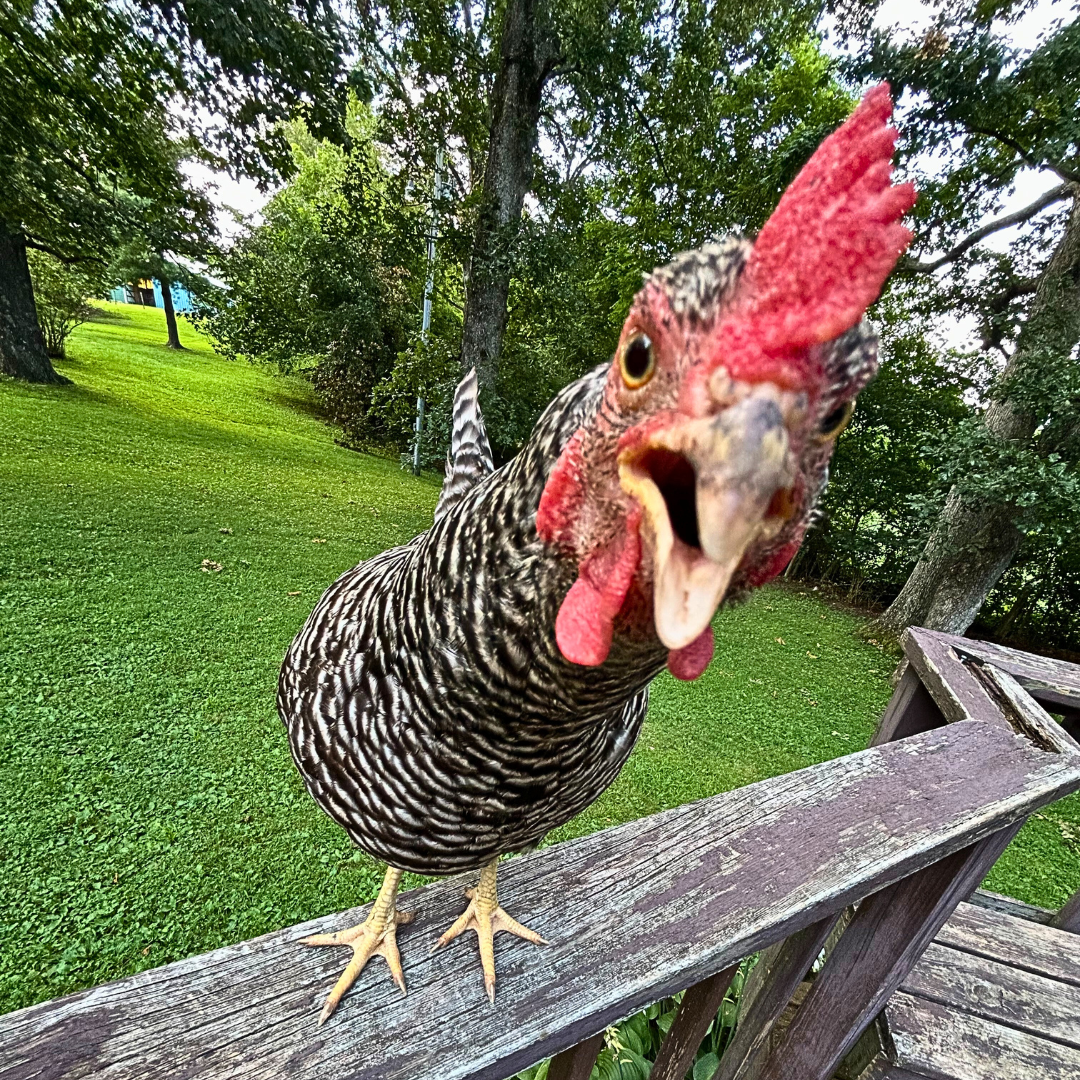Hello, my Featherless Friends! Winter weather is coming, dear, and now is the time to prepare for the cold (not after the first frost!) If you're unsure of how to keep chickens warm in winter, this is the guide for you!
Read on as I give you tips and tricks for keeping chickens warm in winter, a list of essential supplies, and detail what NOT to do (including well-meaning but impractical advice that circulates every year within the poultry community!) From how to keep your chickens warm in the winter without electricity, to what to feed your ladies to keep them warm!
So grab yourself a hot cocoa and let's start brainstorming how to transform your coop from draft central to a cozy chicken retreat!
How to Keep Chickens Warm in Winter
Keeping chickens warm in the winter isn't as simple as hanging a few tarps and topping off their water daily. You'll need to thoroughly prep their coop and make sure they have what they need to not just survive, but thrive through the cold months. This means eliminating drafts, keeping their water free of ice, removing coop hazards, and feeding them a diet that promotes thermoregulation.

The Deep Litter Method: A Cozy, Composting Carpet
The deep litter method isn't just about extra chicken bedding; it's about creating a living, composting carpet for us! The deep litter method starts with placing a deep layer (4-6 inches) of pine shavings and stirring it every few days while adding a fresh thin layer on top. Our droppings will react with the carbon in the shavings, and with regular stirring, it will compost and generate natural heat from below. It's a wonderful, passive way to add warmth to our home.
Heat Lamps vs Radiant Heaters
I must cluck loudly about this! Heat lamps are a fire hazard. A coop is a dusty, flammable environment, and a knocked-over heat lamp can be disastrous. Instead, use a radiant panel heater, which is much safer for your flock and can prevent overheating.

How to Keep Chickens' Water Warm in Winter
We can survive the cold, but we cannot survive without liquid water — and that means keeping their waterers ice-free!. A dehydrated chicken is a chicken in crisis.
The Best Solution: A plug-in heated base or a fully heated waterer is the most reliable method. It provides constant, ice-free water with minimal effort from you.
Good Alternatives:
- Offer us warm water at least twice a day, switching it out as soon as it starts to freeze.
- Place a warm brick (warmed in the sun or briefly in your oven, then cooled enough to touch) directly in the waterer to slow freezing.
Fueling Our Furnaces: Winter Diet Tips
Keeping warm requires extra energy! Help us out by adjusting our diet.
Higher Carbs: Offering a handful of scratch grains or cracked corn in the late afternoon gives us a carb boost to digest overnight, acting like a little internal furnace.
Warm, Wet Treats: We absolutely adore warm table scraps like cooked oatmeal, mashed potatoes, or steamed vegetables (no salt or seasoning, please!). These hydrating and energy-rich meals are a wonderful comfort on a cold day.
The Great Draft vs. Ventilation Debate
This is the single most important concept for a healthy winter coop! You must minimize drafts while allowing for ventilation. What's the difference?
Draft: A concentrated, direct stream of cold air hitting us while we roost. (This is bad and makes us shiver!)
Ventilation: The gentle, passive exchange of moist, stale air for fresh, dry air. (This is essential and keeps us healthy!)
How to Achieve It:
Seal up those sneaky cracks and gaps near our roosting area using silicone sealant or weather-stripping. For larger, open areas like windows or run walls, hanging heavy-duty tarps can block wind while still being removable on milder days.
*Too little ventilation can cause moisture and ammonia to build up in the air and create a risk for frostbite and respiratory infections
Signs of poor ventilation:
Moist spots
Condensation in the coop
Foul odor
Stressed chickens

A Word of Caution: What to Avoid
Dangerous Insulation: Please avoid fiberglass insulation and foam sheets within our reach. We will peck at it, and ingesting it can cause serious health issues.
Heat Lamps: I must cluck loudly about this! Heat lamps are a tremendous fire hazard. A coop is a dusty, flammable environment, and a knocked-over heat lamp can be disastrous. We don't need them and are safer without them. Instead, use a radiant heater!
Supplemental Lighting: While it might be tempting to add light to keep us laying, please reconsider. Winter is our natural time to rest and recover. Forcing us to lay can be hard on our bodies and deplete our resources. Every lady deserves a break!
Pro-Tip for Large Coops: Limit Space
If you have an extra-large coop, consider using a temporary partition to reduce the interior space for the winter. A smaller, cozier area is much easier for us to keep warm with our collective body heat.
Prepare for the Worst: The Winter Emergency Kit
Hope for the best, but prepare for the chilly worst! Having a kit on hand ensures you can help us quickly. Please include:
Electrolyte Powder: For any hen who seems lethargic or dehydrated.
Frostbite Cream: to draw out heat and soothe damaged tissue.
Vitamin Powder: A boost for our immune systems.
Wound Care Supplies: Gauze, vet wrap tape, antibacterial wound spray, and ointment for any winter squabbles or injuries.
With these preparations in place, we can all look forward to a cozy winter season. So next time someone asks you for tips on how to keep your chickens warm in the winter, send this article their way!
Yours in cozy comfort,
Henrietta





